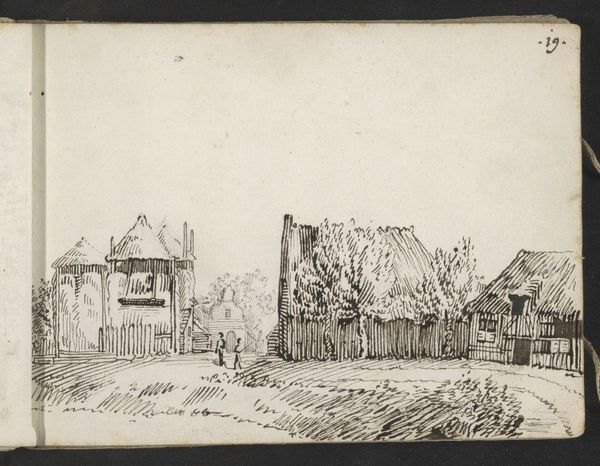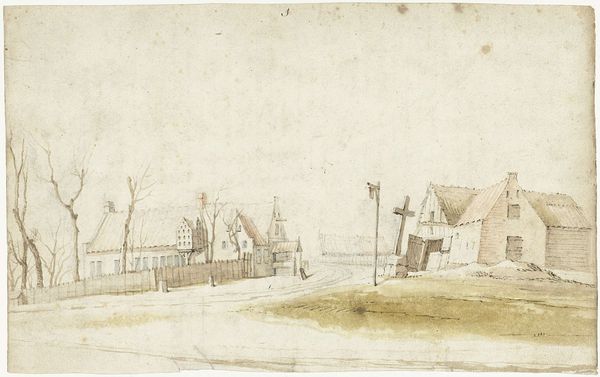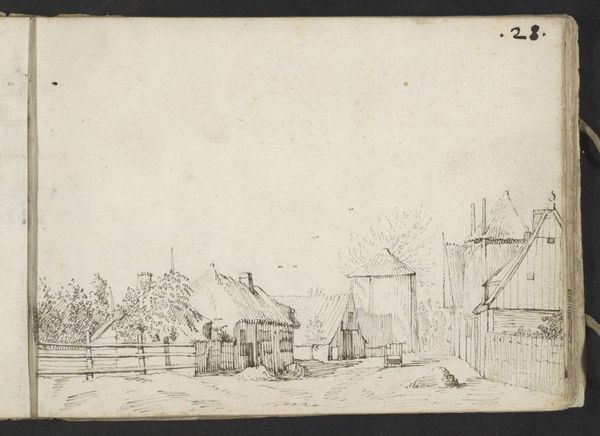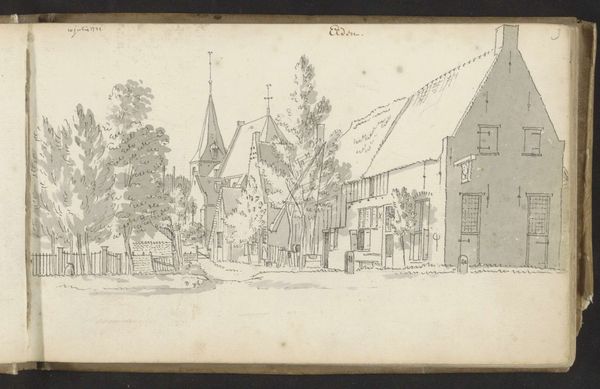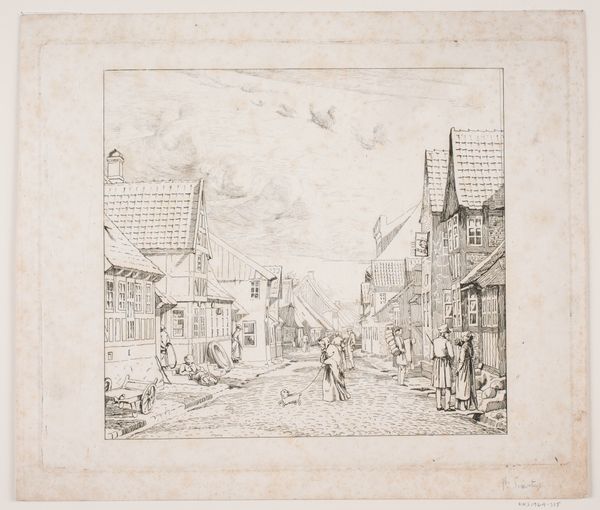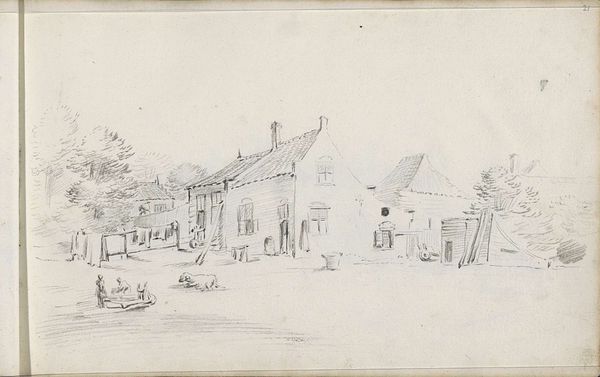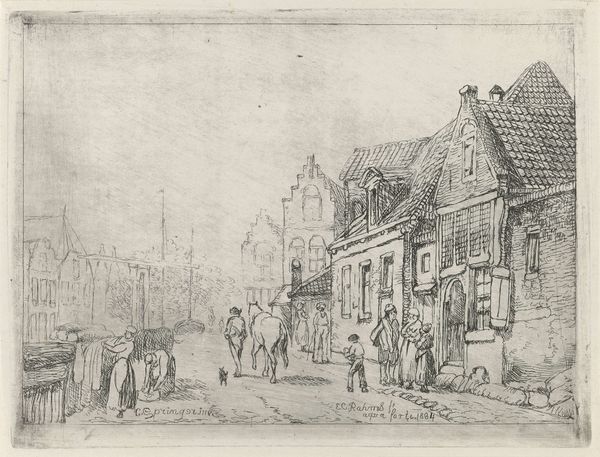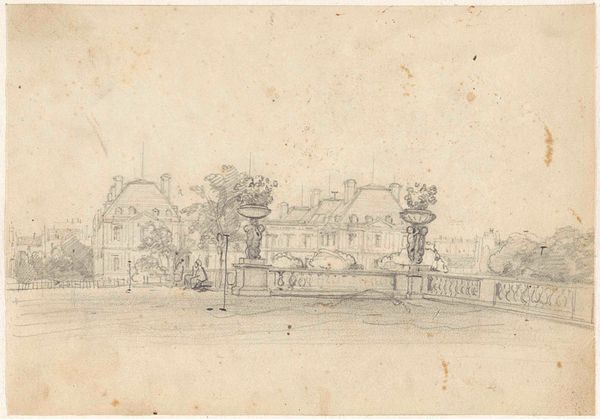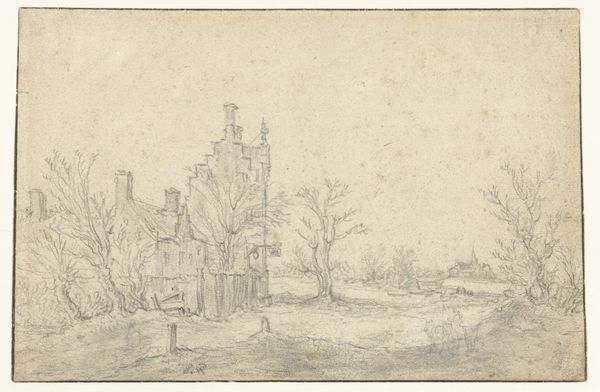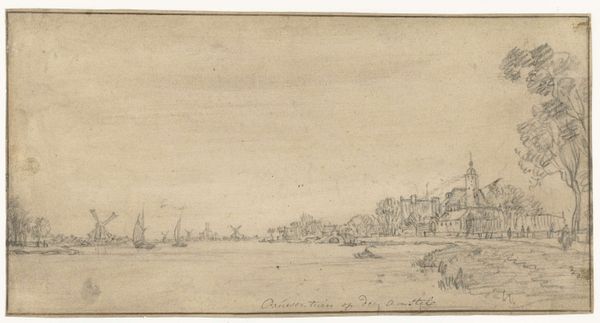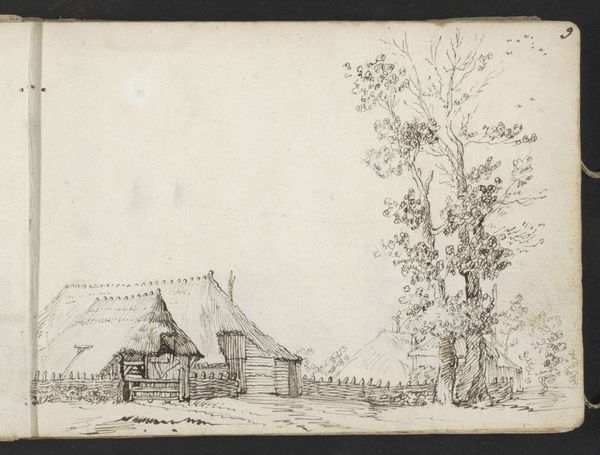
drawing, ink, pen
#
drawing
#
quirky sketch
#
dutch-golden-age
#
pen sketch
#
sketch book
#
landscape
#
personal sketchbook
#
ink
#
sketchwork
#
pen-ink sketch
#
line
#
pen work
#
sketchbook drawing
#
pen
#
cityscape
#
storyboard and sketchbook work
#
sketchbook art
#
realism
Copyright: Rijks Museum: Open Domain
Curator: Looking at this unassuming pen and ink sketch from around 1631-1633 by Gerard ter Borch II, titled "Straat buiten de stadsmuur van Zwolle," currently residing at the Rijksmuseum. What’s your initial take? Editor: It feels remarkably intimate, like a quick visual note dashed off in a personal sketchbook. The starkness of the line work almost gives it an austere quality, despite the scene's everyday subject matter. Curator: Indeed, the sparseness contributes to its unique compositional strength. Observe how Ter Borch uses the delicate, almost hesitant lines to define depth and spatial relationships. Note the orthogonals receding towards the barely suggested windmill in the background. The interplay between the foreground textures and the implied distance… it's a subtle masterpiece of perspective. Editor: But it’s not just about perspective, is it? Think of the materiality of the drawing itself— the quill, the ink, the paper, likely quite rough. Consider this from the standpoint of labor. This wasn’t merely about aestheticizing the Dutch landscape. It was about documenting a physical space through accessible, readily available means. Imagine him quickly capturing this image, perhaps while sitting just outside of town. Curator: Of course, understanding the materials grounds us, but it's also crucial to see how the very lack of ornamentation concentrates our gaze on the structure. The artist's calculated restraint elevates a mundane street scene into a study of form. Think of the verticals of the buildings juxtaposed with the horizontality of the road, dissected by fleeting human figures. Editor: Precisely. Those fleeting figures suggest movement, labor. What kind of labour occurred in these buildings, outside of these city walls? The drawing compels us to acknowledge not just visual but also economic or even sociological perspectives from that time. We begin to speculate on social class through a material lens. Curator: A pertinent point. And in its formal arrangement, this image speaks of controlled asymmetry, drawing our attention to details rather than overwhelming us. A perfect balance between restraint and evocative articulation. Editor: I agree. This isn't just about the lines, forms, or perspective alone, it is more fundamentally about this tangible intersection between the labor of depicting, the tools used, and social contexts. The materiality speaks just as clearly as any symbolic intention. Curator: A stimulating convergence of perspectives, reminding us that even a seemingly simple sketch holds complex visual and material dimensions. Editor: Yes, a wonderful example of how close material examination deepens, enriches our encounter.
Comments
No comments
Be the first to comment and join the conversation on the ultimate creative platform.
